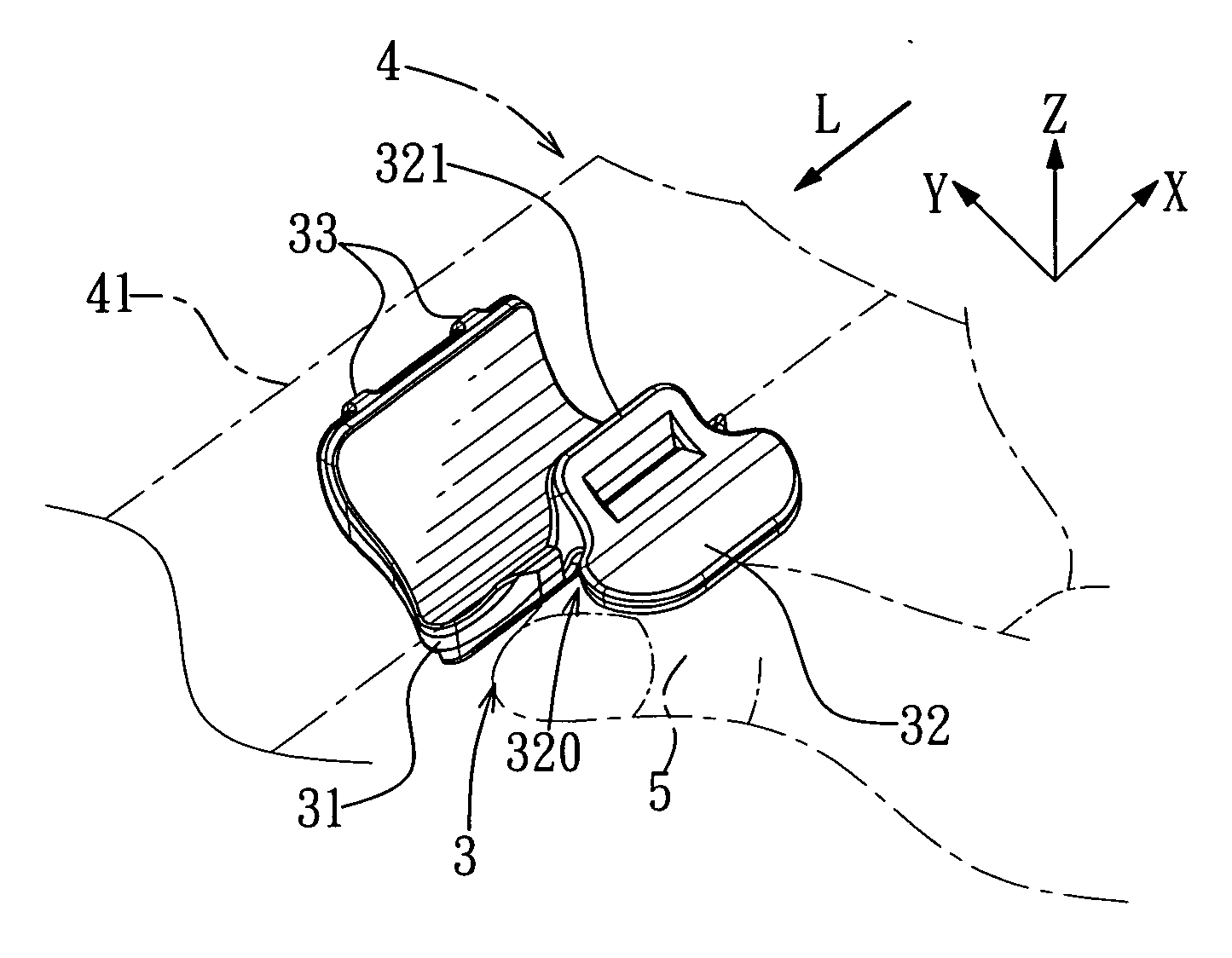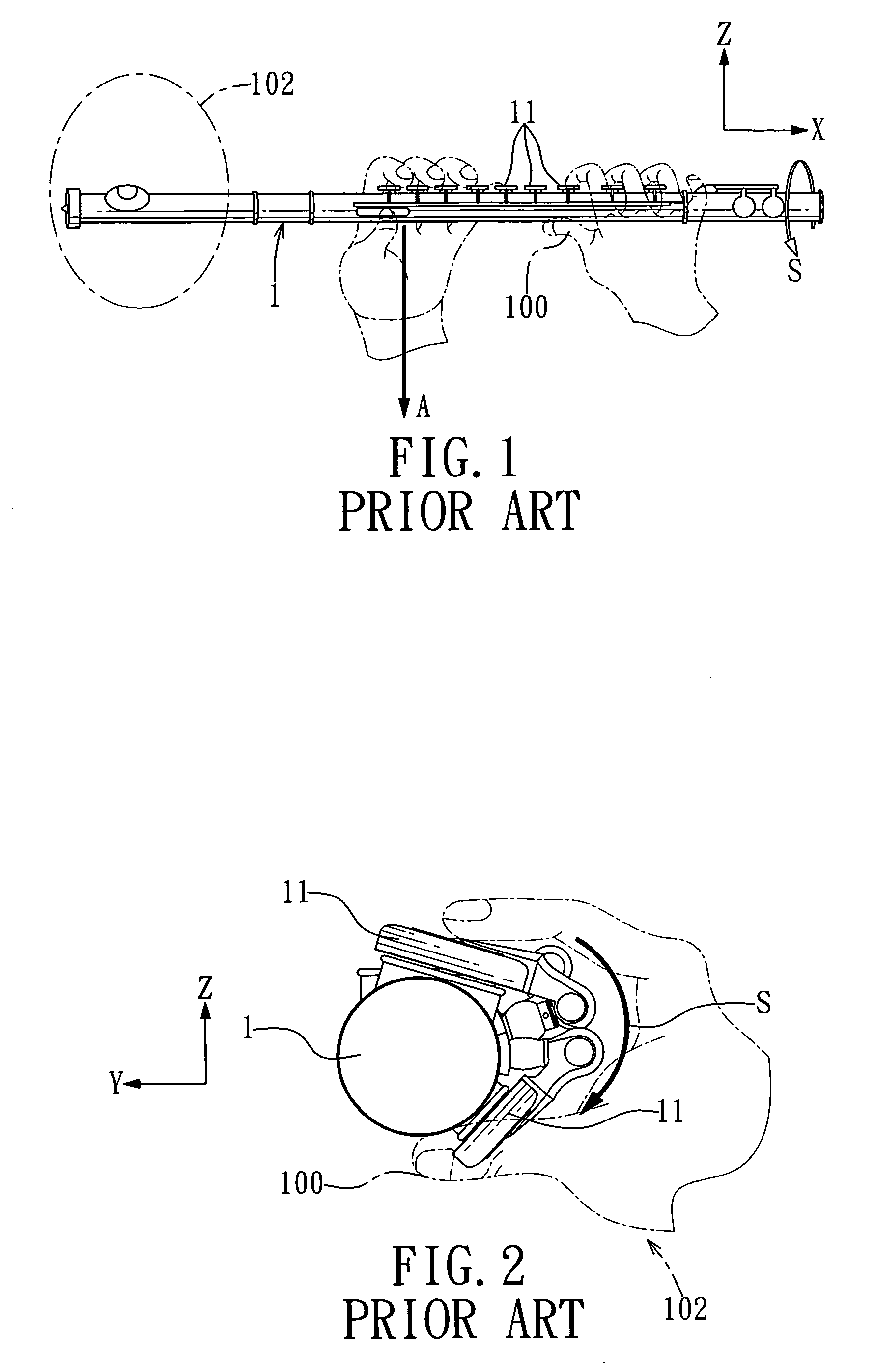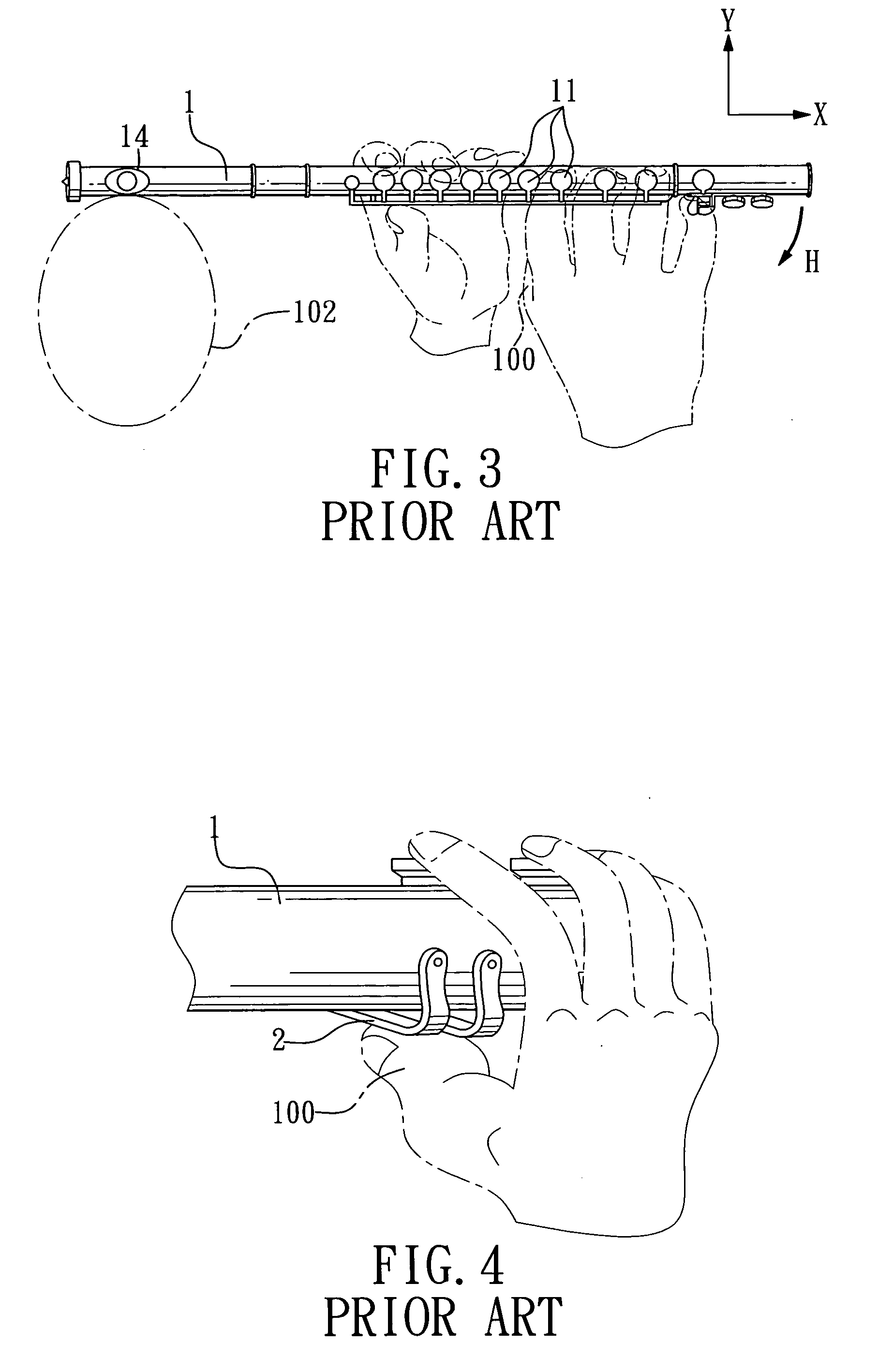Flute attachment
a technology for flutes and strings, applied in the field of flute attachments, can solve the problems of b>100/b> not being able to effectively support the weight of the flute, and the sectional rotation problem,
- Summary
- Abstract
- Description
- Claims
- Application Information
AI Technical Summary
Benefits of technology
Problems solved by technology
Method used
Image
Examples
Embodiment Construction
[0023] Referring to FIG. 6, the preferred embodiment of a flute attachment 3 according to the present invention is shown to be attached to a flute 4 having a round tubular flute body 41 extending along a flute axis (L) and having upper and lower surfaces opposite to each other in a first direction transverse to the flute axis (L), and front and rear surfaces opposite to each other in a second direction transverse to the first direction. The flute body 41 includes a head joint 45 having a mouthpiece 451, a foot joint 47, a body joint 46 between the head and foot joints 45, 47, and a plurality of rods and keys 43 which are disposed such that in a play position, as a result of weights of the rods and keys 43, an urging force is generated to rotate the upper surface about the flute axis (L) toward a flute player 502 (see FIG. 8), which results in the so-called sectional rotation problem.
[0024] Referring further to FIGS. 7 and 8, the flute attachment 3 includes a securing member 31 and ...
PUM
 Login to View More
Login to View More Abstract
Description
Claims
Application Information
 Login to View More
Login to View More - R&D
- Intellectual Property
- Life Sciences
- Materials
- Tech Scout
- Unparalleled Data Quality
- Higher Quality Content
- 60% Fewer Hallucinations
Browse by: Latest US Patents, China's latest patents, Technical Efficacy Thesaurus, Application Domain, Technology Topic, Popular Technical Reports.
© 2025 PatSnap. All rights reserved.Legal|Privacy policy|Modern Slavery Act Transparency Statement|Sitemap|About US| Contact US: help@patsnap.com



